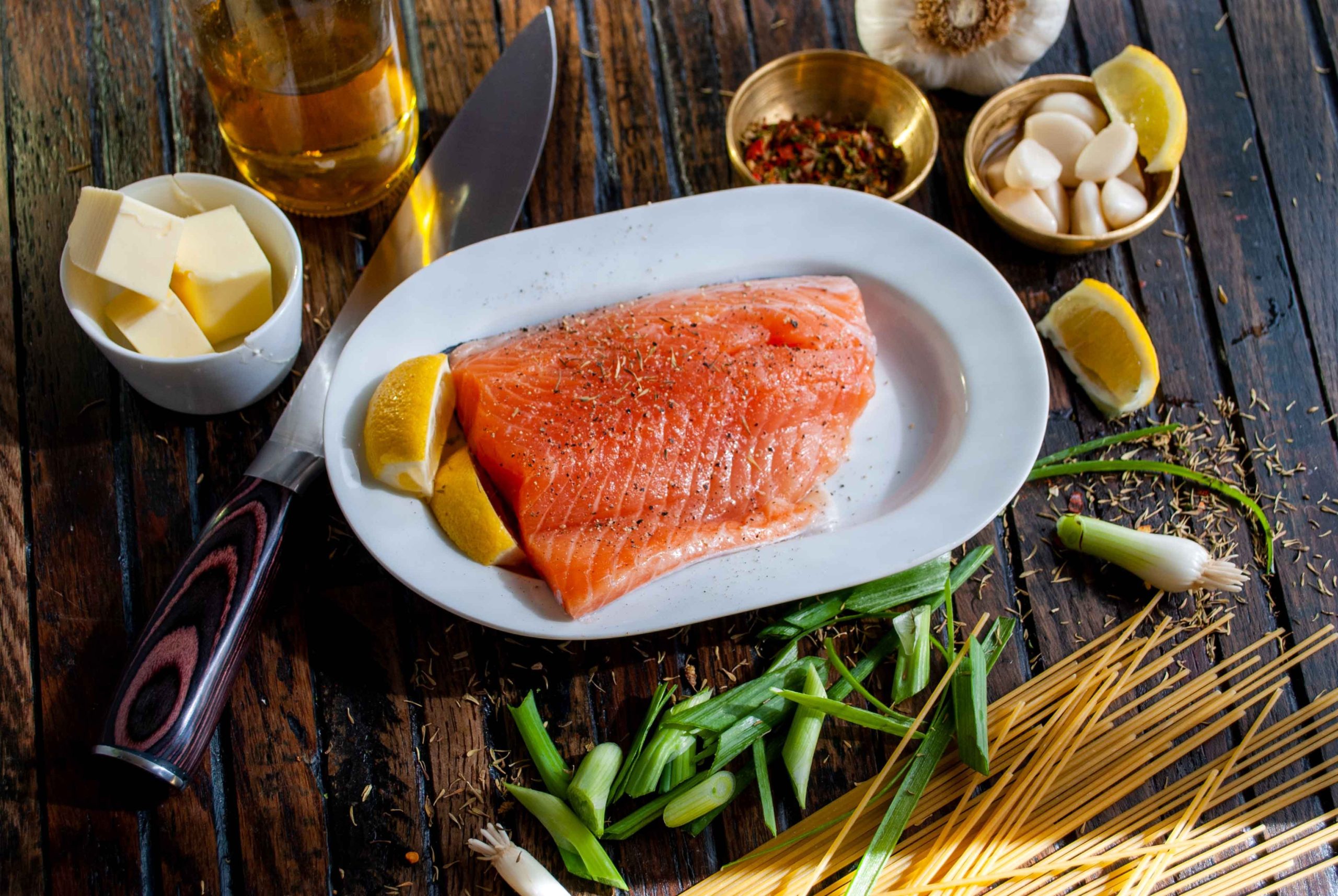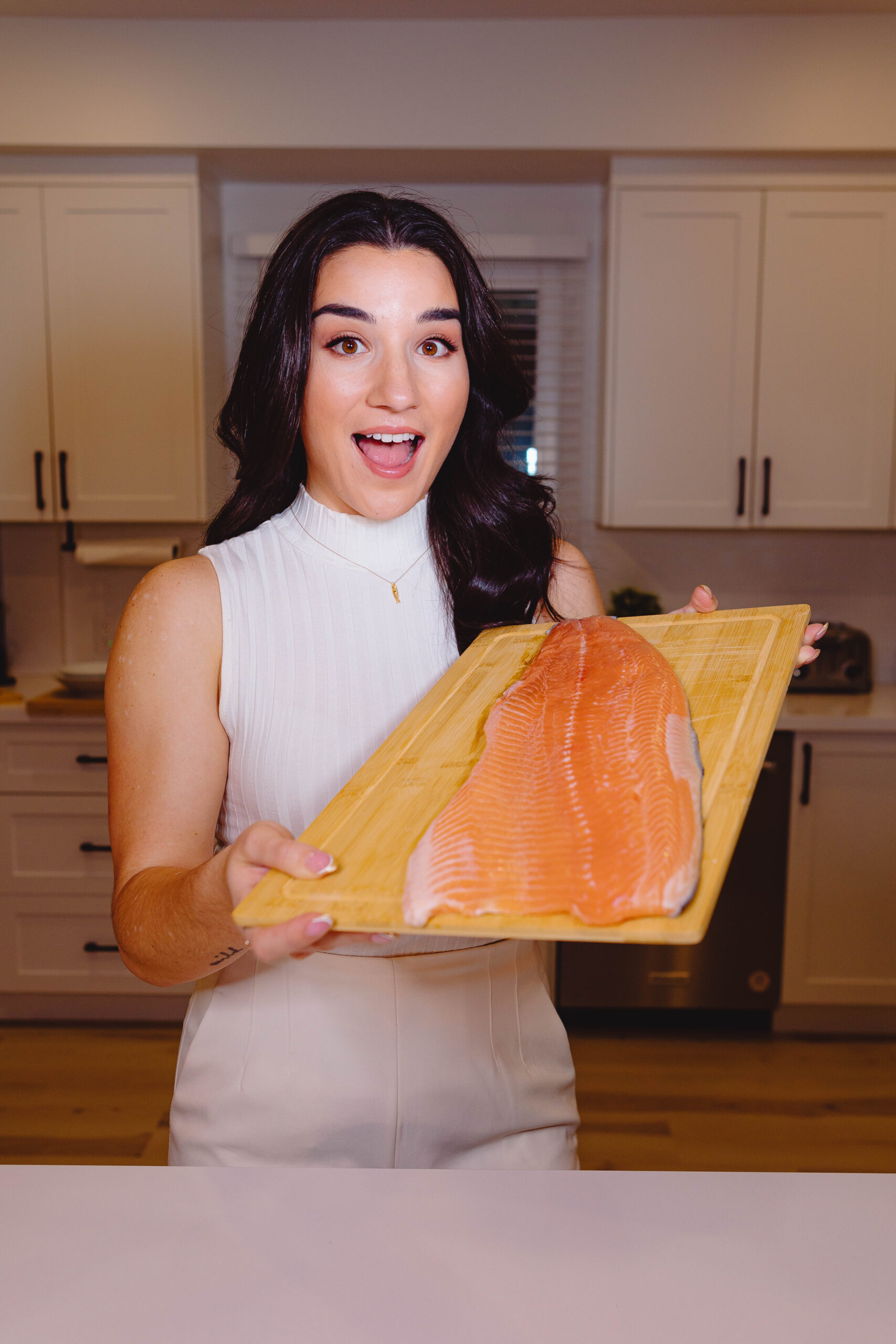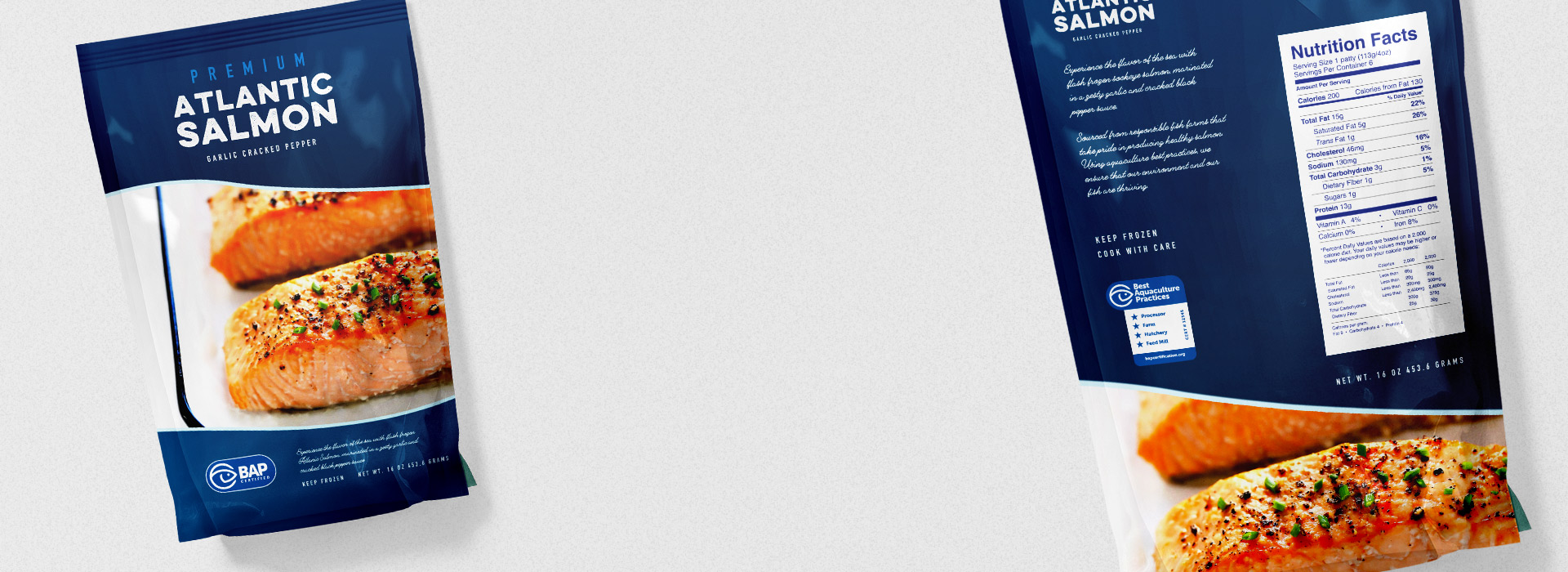
Farmed salmon: Everything you need to know
Farmed salmon can be a sustainable seafood option.
Let’s just get that out in the open, right away. Many people believe that farmed fish or aquaculture cannot be sustainable. This is absolutely untrue.
The same way that you can raise a chicken well or you can raise a chicken poorly, you can raise a salmon well or you can raise a salmon poorly.
While farmed salmon has gotten a bad rap in the past, and much of it well deserved, the industry has made significant strides towards becoming more sustainable. Advances in technology and innovation have resulted in gear and feed improvements that are minimizing the impact on the environment, while still producing a high quality product.
Sustainable farmed salmon
In order to determine if a salmon comes from a sustainable or unsustainable aquaculture operation, a few factors need to be considered.
One is the fish in fish out ratio. Since salmon are carnivorous, they need to be fed a diet of other fish. The fish in fish out ratio refers to the number of fish required to feed and grow the farmed salmon. Generally speaking, for a salmon farm to be sustainable this ratio should be less than one, meaning it requires less than one wild fish to produce one farmed fish. If a salmon farm requires three or four wild fish just to produce one farmed salmon, then it’s not sustainable and is actually further contributing to overfishing.
Another factor that needs to be considered is the methods in which the aquaculture operation is using to get rid of its waste. Waste discharge from aquaculture operations should not affect the surrounding ecosystem. Finally, the salmon farming operation should not pose a significant risk to wild fish stocks through transmission of disease or escapes of farmed species into the wild.
Speaking about sustainability beyond ecological sustainability, farmed salmon operations should also be benefiting local communities by providing jobs and economic opportunities.
Is farmed salmon healthy?
Salmon is a nutritional superstar. This fish is packed full of nutrients that help decrease inflammation, lower blood pressure, and reduce cancer risk. While there are minor differences between the nutritional makeup of wild salmon and farmed salmon, for the most part, they’re quite similar. Farmed salmon tend to have a higher fat content since they exercise less in pens than they do when swimming in the wild. As a result, farmed salmon can be higher in calories, but also contain more Omega-3s. Wild salmon tends to have more potassium and iron, while farmed salmon is higher in B vitamins. On the protein front, wild and farmed salmon are nearly identical.
Aquaculture sustainability certifications
In aquaculture, the Aquaculture Stewardship Council (ASC) and Best Aquaculture Practices (BAP) are considered the gold standard for certifying sustainable aquaculture operations.
Aquaculture Stewardship Council (ASC)
This is the aquaculture equivalent to the Marine Stewardship Council (MSC) certification. Like MSC, ASC has robust traceability standards. The ASC certification also includes a social standard to ensure the health and safety of workers in the operations they certify, prohibit forced labor and child labour, and expand workers rights. Similar to the MSC certification, the ASC certifies based on a pass/fail system— a product either meets all the necessary criteria and is certified or it falls short in some categories and is not certified.
Best Aquaculture Practices (BAP)
The Best Aquaculture Practices (BAP) certification is the most well-known certification for farmed seafood. While the ASC certifies based on a pass/fail system, BAP certifies their aquaculture operations using a 4-star system within their certification standards. Each star applies to one element of input for the product being certified: farm, processor, feed-mill, and hatchery. If a product has a 4-star rating on the package, it means all of these facilities were assessed for environmental and (some) social sustainability considerations.
Final thoughts
Today, aquaculture products currently account for approximately half of the seafood consumed globally. It’s the fastest-growing form of food production in the world and is considered to be a solution to meeting global seafood demand while taking pressure off of wild fish stocks. Farmed salmon will continue to be an important part of sustainably managing fisheries and feeding the world moving forward. This is why it’s so important that we approach the industry with optimism and determination to improve it. Learning more about farmed salmon and how to make a sustainable choice in your own home is the first step to getting us to a more sustainable aquaculture industry.



